Glamour Gab Of Hollywood
Here’s Why I Love Hollywood
Upon my return to Hollywood, after a two-month vacation, the town’s glamour was almost overwhelming—and tremendously welcome. By this I mean, for example, seeing June Allyson tear- ing down Wilshire Boulevard in her pink convertible, she wearing a pink dress which exactly matched the car, her two laughing youngsters beside her. done up in the same shade of pink. Or Jeff Richards’ borrowing Humphrey Bogart’s yacht to sail to Honolulu to mend his broken heart over his broken marriage. Or going to the party John Huston gave after the premiere of “Moby Dick” at the Mocambo, where every woman was beautiful and every man handsome, and the center of all eyes was Gregory Peck, the star of “Moby Dick,” and his chic, chic wife, Veronique. And what should I see, just a few days later, but Greg—not in evening dress, but in the most casual slacks—at the Father and Son game given by the Little League baseball set. Greg was with his two sons—and with them, Greta Peck, his first wife.
Crazy . . . and wonderful, for just the week before returning home I’d certainly not been having any drab old time, either. That week I had been on the tropical island of Tobago, in the Caribbean, where the climate is a constant 80 degrees, day and night, summer and winter, where the sea is pure emerald against the deep blue sky, where the palms really sway and the beaches have white, white sand, and where Rita Hayworth, Bob Mitchum and Jack Lemmon were making “Fire Down Below.”
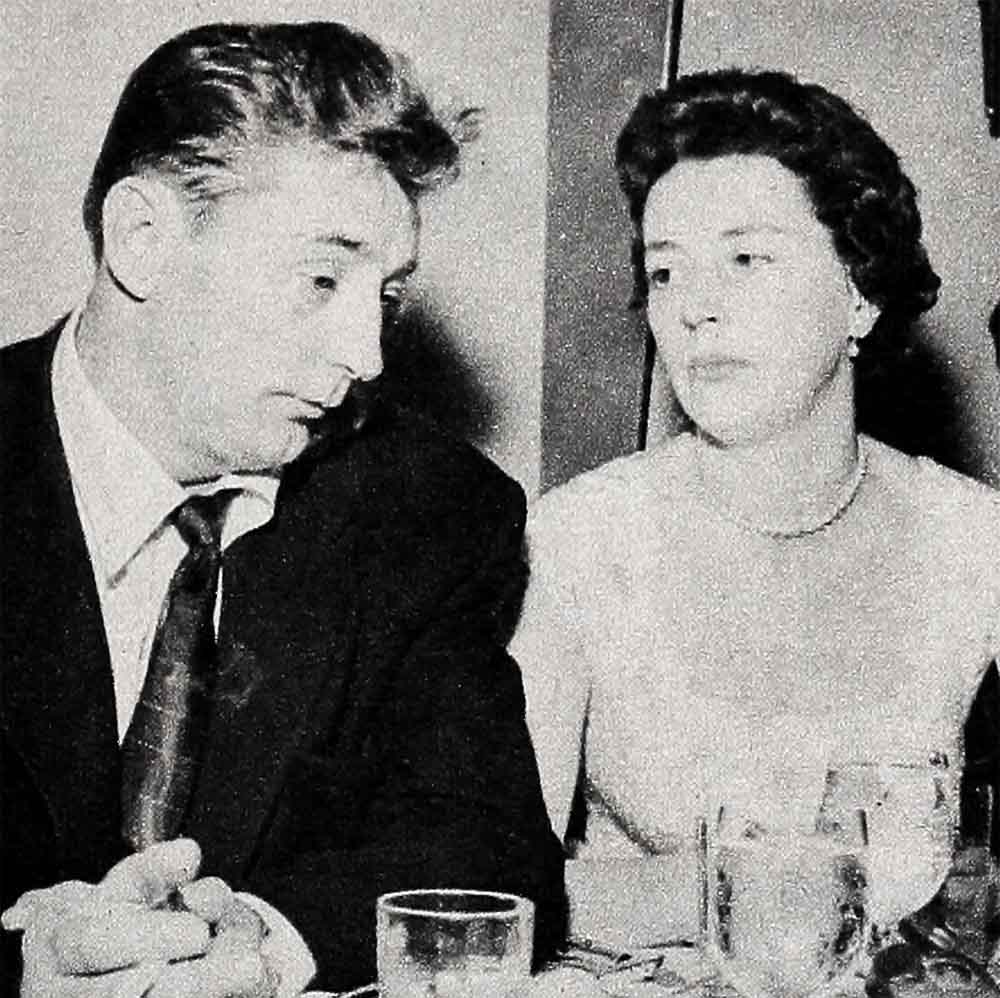
No One Can Take Her Place
You’ll never find two men more different than Bob Mitchum and Jack Lemmon. But they have one thing in common—their praise of Rita Hayworth. Today, she is more beautiful than ever, and warmer and sweeter than I’ve known her—and I’ve known her ever since she was little Rita Cansino, dancing with her father in a small Mexican café in Tia Juana. Even then she had charm, but now that charm is polished, with a jewel-like glow.
Lying on the beach at Tobago, Jack and Bob were watching Rita as she serenely went through close-ups for “Fire Down Below.”
Said Mitchum, with his lazy drawl, “Won’t it be awful when the public tires of us and we have to go to work?”
Jack, who is taking his career pretty seriously these days, quickly replied, “Don’t you call acting work?”
Mitchum turned to look at me. “Does anyone?” he said.
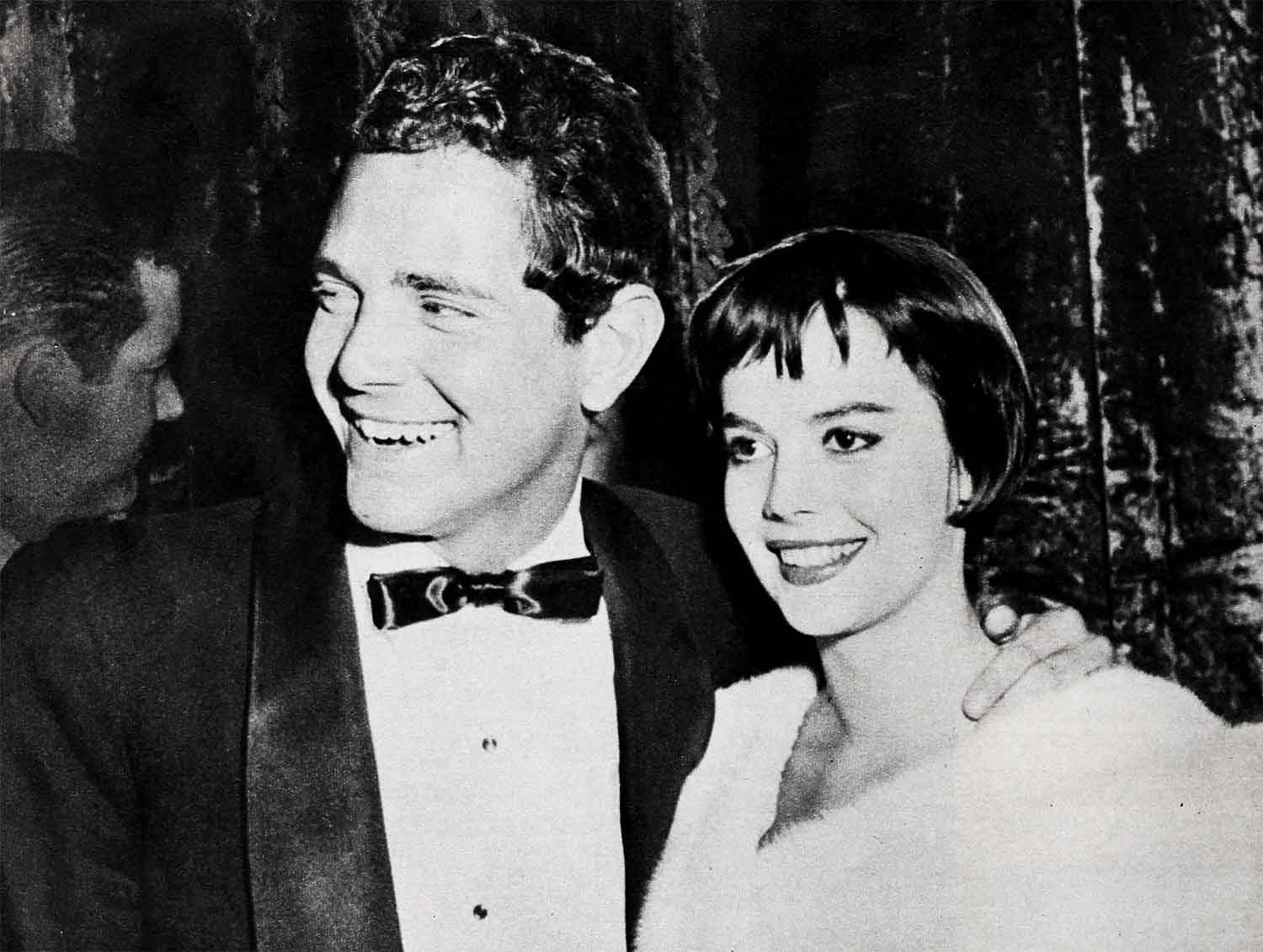
She Knows What’s Good—For Nat
Now that spritely Natalie Wood has achieved that fabulous age, eighteen, I’m putting her on a pedestal because, despite her being in love, she still keeps her pretty head.
Nat’s in love (this month) with Scott Marlowe. A nice boy, Scott, and a good actor, but he takes things very, very seriously—his art, in particular. Scott belongs to the solemn, dignified young group that has been coming to Hollywood from Broadway.
So, since Natalie is in love (this month) with Scott, he started trying to influence her. He tried to talk her into not giving interviews, not doing picture spreads that showed her at home, or at the beach, or just having the kind of simple fun-time Natalie has all the time, everywhere.
Did Natalie succumb? No. In one single week she did nine picture sittings, gave four happy interviews. Does she try to influence Scott to do likewise? No again. She’s too brainy for that. She knows a girl gets nowhere trying to change a man’s convictions. However, even while she’s bedazzled with romance, Natalie knows from her long experience that performances without publicity are soon forgotten, and she does want a long career, which she stands every chance of attaining.
Still, romance beguiles her, as it does all girls of eighteen. Being an actress, Natalie is trapped into a dream without half trying. At present, she sincerely believes she is in love with Scott. A couple of months ago, she just as sincerely believed she was in love with Raymond Burr, who is, incidentally, nearly old enough to be her father. My guess is that, in a couple of more months, she will sincerely believe she is in love with somebody else.
When Nat went to see “Giant” at a sneak preview recently, she cried so during Jimmy Dean’s scenes, she could barely see them. It’s times like this that she is the most real. The wonderful young artist in her recognized the genius artist that was Jimmy.
If Jimmy had had Natalie’s poise, we wouldn’t all have suffered such a loss.
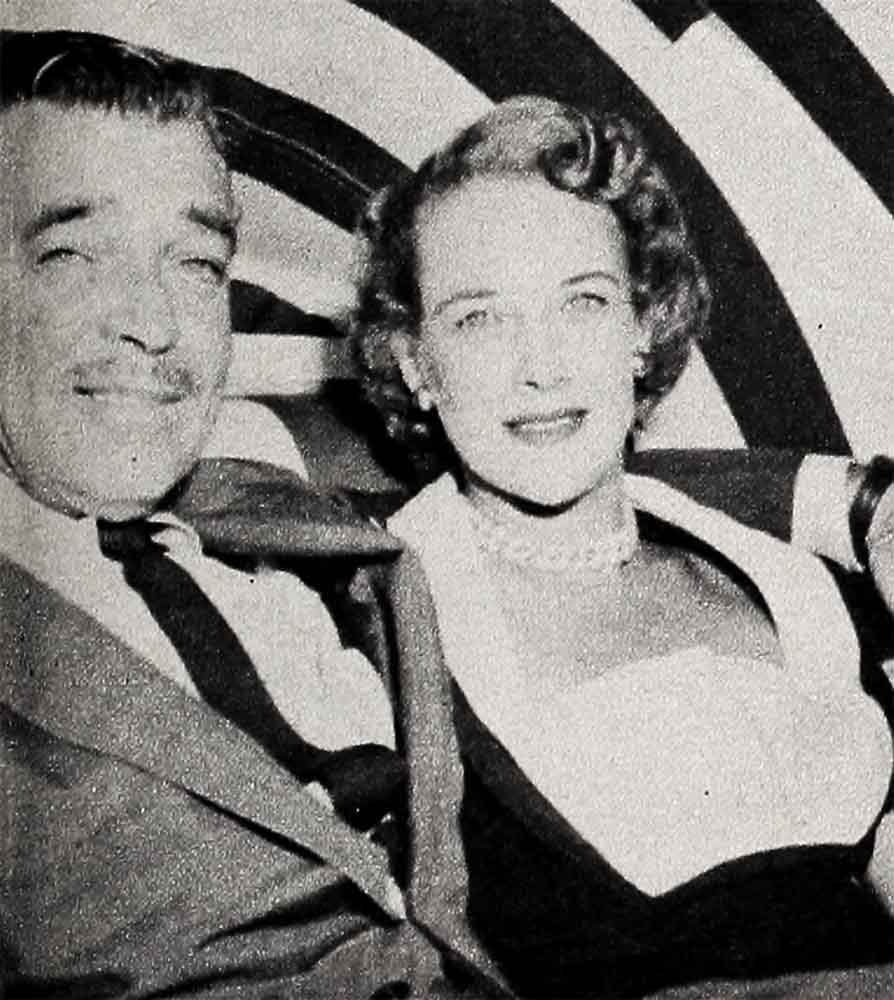
A King Watches A Queen
Hollywood, no matter where it is, generates glamour, but at home it glistens the most. Take, for instance, the stories behind last month’s headlines of Kay Spreckels Gable’s heart attack; of Rock and Phyllis Hudson’s trip to Europe; of Liz Taylor’s new evidence of her lasting friendship for Monty Clift; of John Kerr and Paul Newman as the center of every producer’s conversation; of the split-up between Martin and Lewis.
This is the story behind the Gable headline: Kay has been in love with Clark Gable ever since she was Kay Williams, a particularly beautiful and spritely young actress, which was long before Clark married Lady Sylvia Ashley Fairbanks Stanley.
Clark was almost in love with Kay—as almost in love as he was with quite a few girls—after Carole Lombard’s death and before he married Lady Sylvia and after he divorced her. In the meantime, Kay had married Adolph Spreckels, the sugar heir, had children, got her divorce. Then she and Clark came together again, and were married in June, 1955.
Kay became Clark’s fifth wife, so it might well have become just another marriage—except for the important thing: Kay Gable was not only deeply in love, but wisely. All Gable’s wives have adored him, and no wonder. This is a man, and a great lover, and also a completely delightful, sensitive human being.
Josephine Dillon, his first wife, saw the great actor in him, helped him to realize his acting dreams. ea Langdon, his second wife, saw the gentleman in him, and helped to polish him. Vivid, terrific Carole Lombard communicated her own zest for life to him, and when she was killed in that airplane crash, Clark went through weeks of wishing he had died, too. Yet he is too naturally healthy, mentally as well as physically, to stay in that morbid state for too long.
Only Sylvia Gable misunderstood him, and Clark misunderstood her. Sylvia wanted to be queen of society—Hollywood, New York, the international set—and Clark would have made the perfect king. However, he was too much of a natural king to do just that. Gable leads his women; he’s never led.
Smart Kay Gable, adoring him, decided to combine the very best features of all his wives—and she has. She called his studio “the office” and never went there—which was what Rhea Langdon had done. She listened to every word he wanted to discuss concerning his scripts, a la Jo Dillon. When Clark went to Utah for “The King and Four Queens” Kay went along to create laughter and parties for him, just as Carole Lombard used to do. She made crazy hats for him and his four leading ladies and sent them over to the set for a laugh. The company had to get up at dawn, but Kay was up earlier, fixing Clark’s breakfast, then later packing a lunch for everybody and sending it to the set, waiting at home for him with a wonderful red-hot supper.
Only thing she forgot was the strain it had been on her, only a few months back, to lose a baby. And when she went down to the little town of St. George, Utah, and joined the local sewing circle and helped in a quilting bee, she ignored the long hours she was putting in. Thus she overdid and landed in the hospital.
But that’s when she learned how very much of a loving husband Clark is. He moved into the hospital to be beside her. He worked on “The King and Four Queens” all day, because Kay insisted upon it, knowing Clark’s strong sense of obligation toward productions. But evenings, nights, mornings, there he was beside her, letting her know his love of her.
Kay is back home now, almost entirely well. Clark is home, too, more at home than he has ever been in his life.
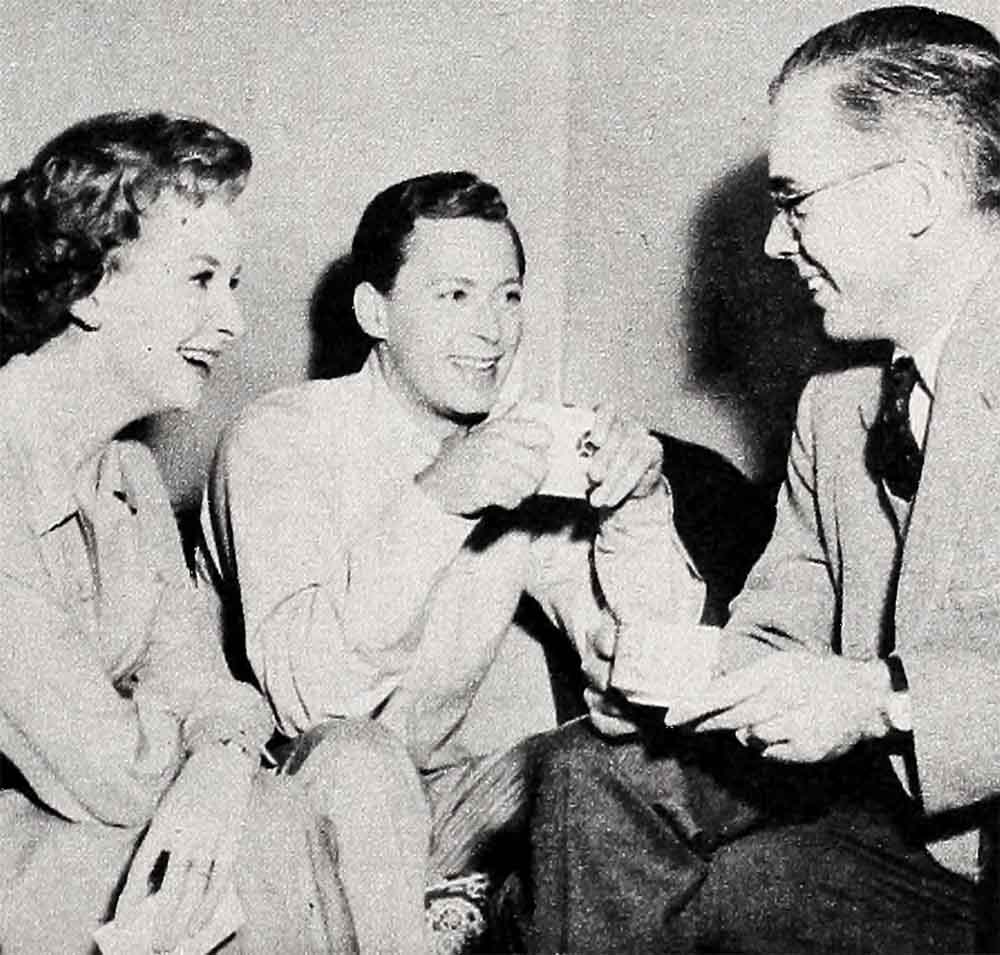
A Comedy of Errors?
While the story of why Martin and Lewis split up has long been rumored—too much sheer incompatibility—the yarn as to why they may yet get back together again hasn’t been told.
A co-starring team, in many respects, is like a married couple, and their breakup is much like a divorce. Jerry and Dean had been growing apart for some time, and they weren’t helped one bit by “pals” on either side, telling each of them that he was “right.” Jerry’s chums all applauded him for his ambition, his continual self-improvement, his zany show-offness. Dean’s buddies told him that he was the wise one, relaxing at golf, playing around with friends, while Jerry held the business conferences and took over the emcee role at some dull dinner party.
Which one actually was “right” depends upon whether you regard life as a ball, as does Dean, or as a battle, as does Jerry.
So they have parted and will try going it alone. They are great personalities, each of them, with great talents. But it hardly seems likely that they can earn apart the money they earned together.
The crazy part is that Dean, the romantic, needs the money more than Jerry. because of his alimony situation. So that may bring him back into the costarring “marriage.” And Jerry’s ambition may bring him back, if he finds he’s less popular without Dean.
It will be interesting tor you and me to watch for the next chapter.
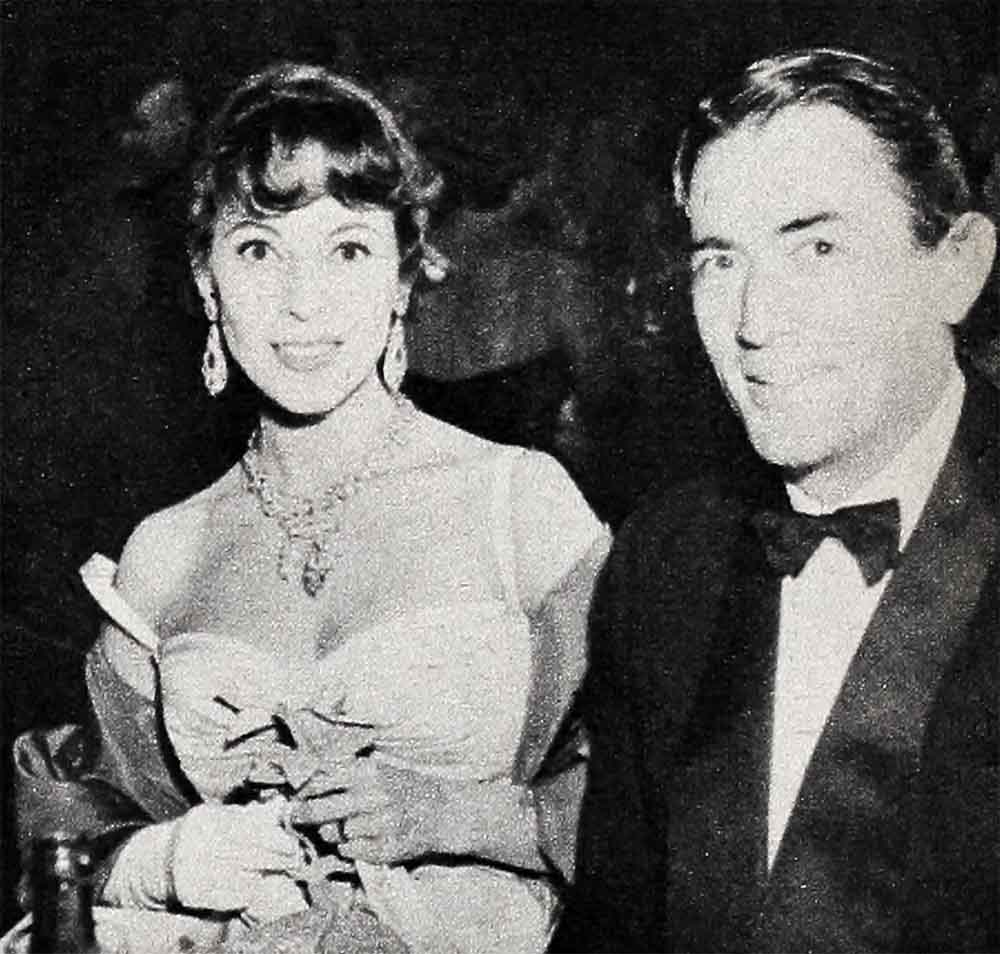
Two Stars To Wish On
When “Somebody Up There Likes Me” was previewed in Hollywood’s biggest theatre, there wasn’t a sound when Paul Newman’s name was first flashed on screen. But at the end, when Paul’s name appeared again, the entire house rocked with applause.
Paul is destined to be a big star. However, Hollywood isn’t sure he will be the biggest of the new crop, for the night they after “Somebody” was previewed, sneaked “Tea and Sympathy.” Deborah Kerr was magnificent in it, but it was John Kerr the audience cried over so intensely that there wasn’t a dry handkerchief left in the house. Keep your eye on John, for he’s going places, too.
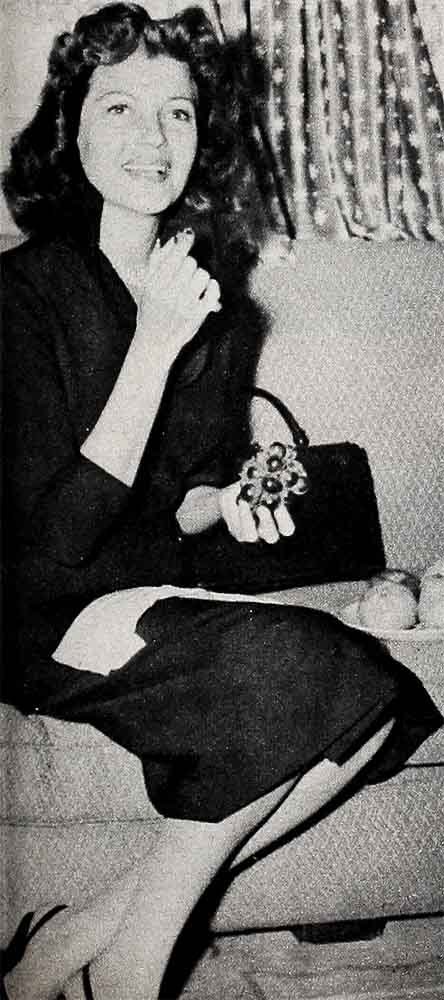
A Marriage Is For Keeps
Before Rock Hudson would agree to do “Something of Value,” which will be shot almost entirely in Africa, he made M-G-M promise him a vacation in Europe with his wife, Phyllis. Rock particularly wanted his girl to see Rome, the city which he loves the most outside of this country.
Rock is the best kind of a traveler. He steers clear of the luxury hotels, the rich restaurants, or the kind of bars or parties that are just like the bars or parties at home. Rock learns the language of the people where he’s going, lives in the little out-of-the-way places so that he can learn about and understand the country he is visiting. He’s particularly keen about Italy.
He’s even keener about keeping his marriage a romantic one. All that chatter that he and Phyllis are having more trouble than the average newlyweds during their first year together is just so much idle chitchat.
Take my word for it. I know Rock very well, having known him before he became famous. He didn’t enter into marriage lightly. He knew Phyl was the girl he wanted, and he intends to stay married—happily married. Rock is very strong-minded, and so is Phyl, so inevitably they come head-on once in a while. She wants a fine marriage, too.
Nobody can break up a marriage that two people don’t want broken up. To Rock, showing off Europe to his bride is just another way of his strengthening the loving bonds between them.
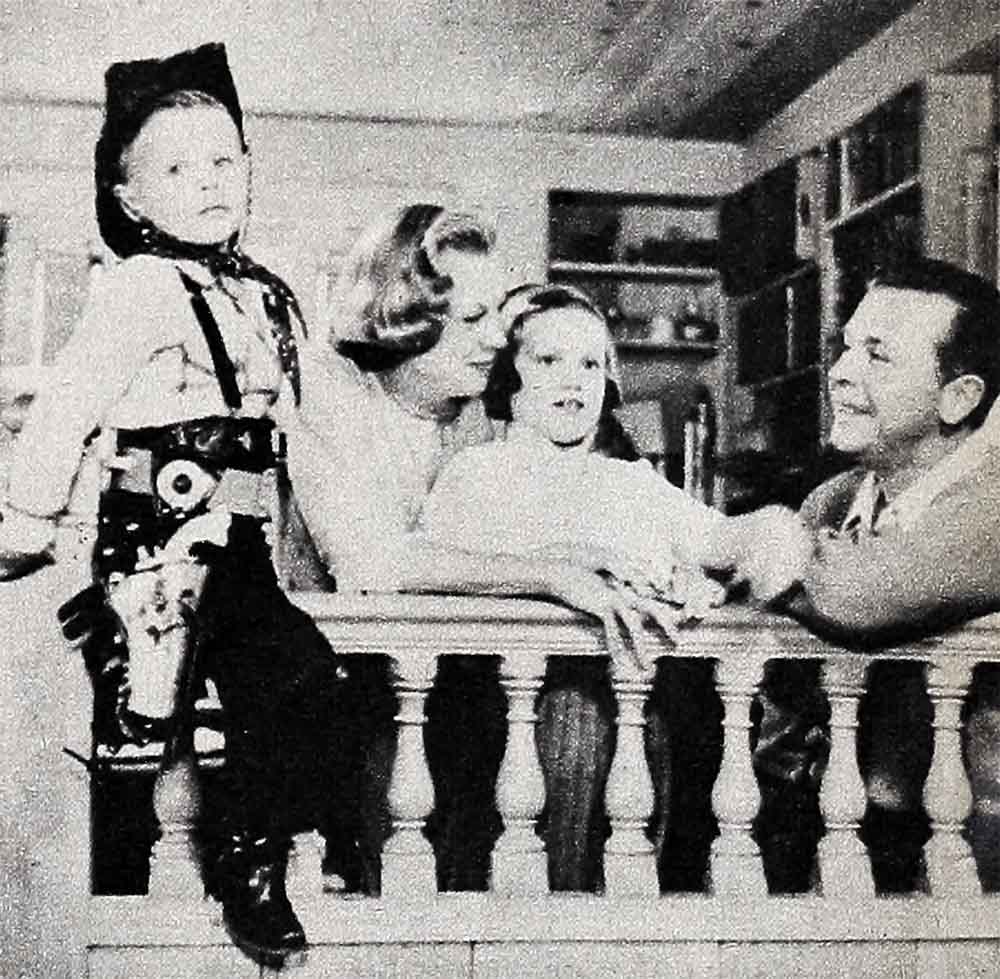
For Monty, A Friend In Need
I can now tell you that, despite all the brave pronouncements immediately following Montgomery Clift’s automobile accident, up until mid-July there was every chance that Monty might never act again and that the picture, “Raintree County,” couldn’t be resumed.
This was because Monty’s badly smashed jaw didn’t set correctly, following the corrective surgery. It healed slowly, functioned even more slowly, and even after the pain and swelling were gone, it prevented Monty from speaking clearly.
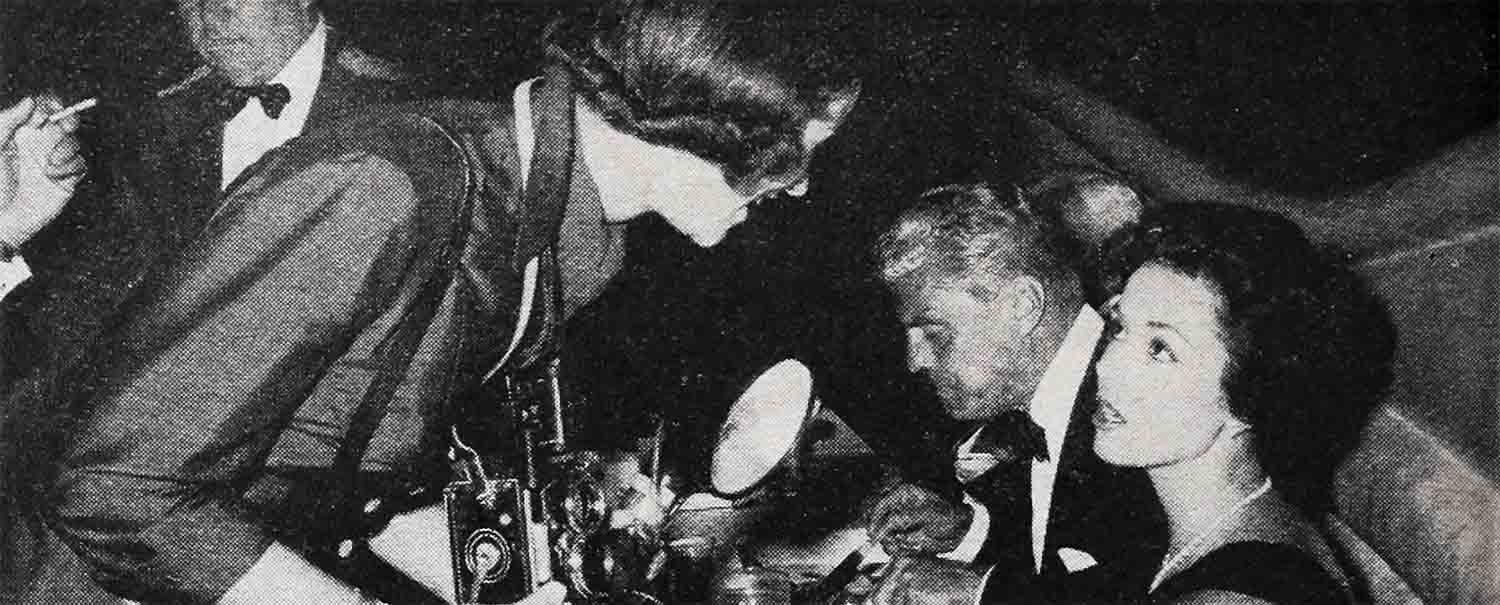
For a man who has wanted to be a fine actor, and nothing save a fine actor, since the age of thirteen, the mere thought that a speech defect might ruin his whole career was horribly depressing.
The one person who never for one second would let him quite succumb to this fear was Liz Taylor. Monty’s accident occurred, as you probably remember, as he was driving away from Liz and Mike Wilding’s house. Clift isn’t a good driver and the road from the Wildings’ is a tricky one. As a matter of fact, Monty is a real “city boy” and not good at anything either mechanical or athletic.
Naturally, Liz and Mike felt some sense of responsibility for his accident, though it wasn’t in the least their fault. Besides, there has been a great bond of friendship between Liz and Monty ever since they made “A Place in the Sun.”
Liz is. a strong character; love and friendships are enduring things with her. She not only visited Monty every day in the hospital, but sometimes, when the going was the blackest for him, several times a day. And Monty, remembering Liz’s calm courage when she faced blindness a couple of years ago, took strength from her courage and did all the corrective exercises the doctors demanded.
Monty is all right now, and “Raintree County” will be completed. And the purely platonic appreciation of Liz and Monty for one another is lovely to see.
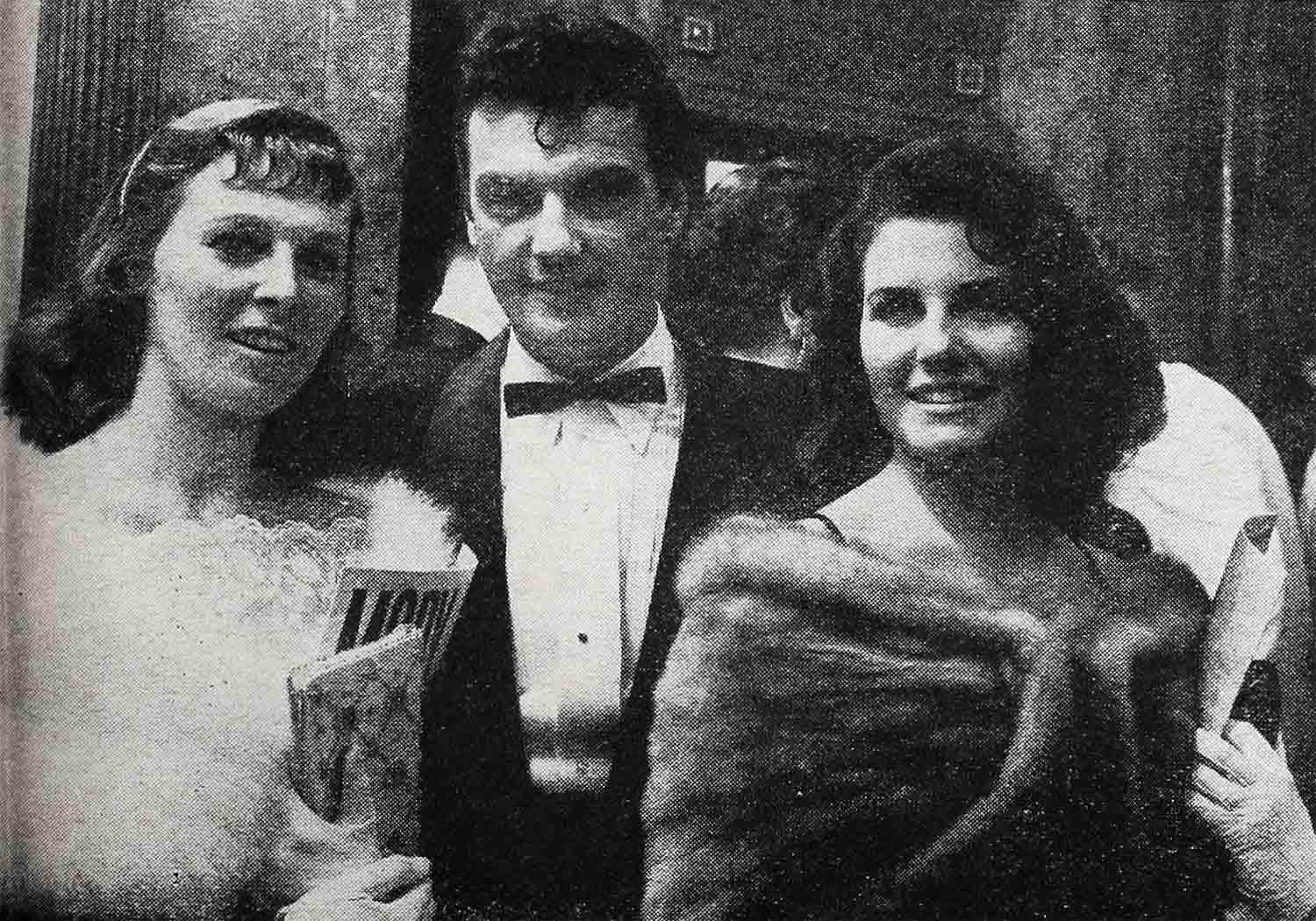
Saint In Sweaters
Proof that the girls from the solemn New York acting group, now moved to Hollywood, can relax a little is provided by that exquisite actress, Eva Marie Saint. When she first arrived in Holly- wood to make “On the Waterfront,” Eva was convinced that clothes are of no importance to a good performer. In fact, the sloppier the grooming the better is the general theory of the Actors’ Studio crowd, as witness Marlon Brando and others. As currently witness Marilyn Monroe Miller also, alas, for glamour.
Then Eva Marie encountered Paramount and “That Certain Feeling,” plus the wiles of Edith Head, the designer, and Nellie Manley, the hairdresser. Nellie’s been an expert ever since those long-ago days when she took a dowdy brown-haired German girl and transformed her into Marlene Dietrich. Edie had taken stars as diverse as Jane Wyman, Barbara Stanwyck, Jennifer Jones and Grace Kelly and turned them into fashion plates.
Thus, when Eva Marie told these two ladies that: (a) she didn’t want her hair dolled up; and (b) that, since she was playing a secretary, she preferred wearing nothing but sweaters and skirts, Edith and Nellie smilingly agreed. Agreed and obeyed. However, Nellie slicked Eva’s golden hair tight back, with such artistry that her delicate, sensitive face took on a positive beauty. Edie put her into sweaters and skirts that had such lure that Eva’s simplest scenes scintillated with sex. Result: Eva Marie ran off with the picture, even from Bob Hope.
THE END
It is a quote. PHOTOPLAY MAGAZINE OCTOBER 1956




